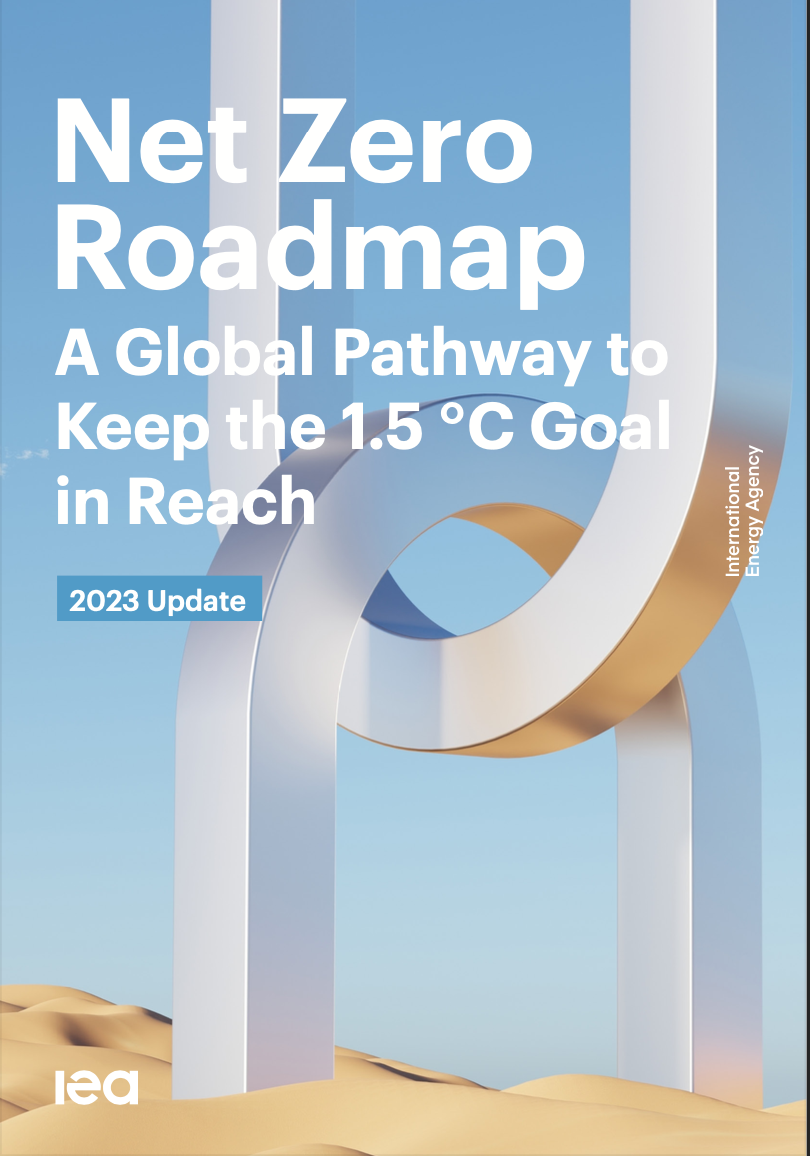
In an update to the International Energy Agency's (IEA) landmark Net Zero Roadmap, the path to limiting global warming to 1.5°C remains open thanks to the record growth of clean energy technologies. However, the report emphasizes the need for greater ambition and implementation supported by stronger international cooperation to reach climate goals.
The 2023 update of the Net Zero Roadmap highlights that driving greenhouse gas emissions to net zero in the global energy sector while limiting global warming to 1.5°C is still achievable, but rapid momentum is required in several areas. This report builds upon the original 2021 publication that has served as a foundational reference for policymakers, industries, the financial sector, and civil society.
Record growth in solar power capacity and electric vehicle sales since 2021 align with the pathway to achieving global net-zero emissions by mid-century. These two technologies alone contribute to one-third of the emissions reductions needed by 2030. Additionally, clean energy innovation has expanded options and lowered technology costs.
However, more ambitious actions are necessary in this decade. The updated net-zero pathway outlines a global strategy to triple renewable power capacity by 2030, double the annual rate of energy efficiency improvements, increase sales of electric vehicles and heat pumps, and reduce energy sector methane emissions by 75%. These strategies, based on proven and cost-effective technologies for emissions reduction, account for more than 80% of the required reductions by the end of this decade.
IEA Executive Director Fatih Birol emphasized the importance of global cooperation, stating, "Keeping alive the goal of limiting global warming to 1.5°C requires the world to come together quickly. The good news is we know what we need to do – and how to do it. Our 2023 Net Zero Roadmap, based on the latest data and analysis, shows a path forward. But we also have a very clear message: Strong international cooperation is crucial to success. Governments need to separate climate from geopolitics, given the scale of the challenge at hand."
The Net Zero Roadmap not only outlines a path to net-zero emissions for the global energy sector by 2050 but also emphasizes the importance of a fair transition that considers national circumstances. Advanced economies are expected to reach net zero sooner, allowing emerging and developing economies more time to transition. The pathway aims to provide access to modern forms of energy for all by 2030 through an annual investment of nearly $45 billion, which accounts for just over 1% of energy sector investment.
However, staying on track necessitates most countries advancing their net-zero targets and mobilizing increased investment, particularly in emerging and developing economies. In this updated pathway, global clean energy spending is projected to increase from $1.8 trillion in 2023 to $4.5 trillion annually by the early 2030s.
The updated scenario relies on substantial policy-driven expansion of clean energy capacity to reduce fossil fuel demand by 25% by 2030, resulting in a 35% decrease in emissions compared to the all-time high recorded in 2022. By 2050, fossil fuel demand is expected to fall by 80%, eliminating the need for new long-lead-time upstream oil and gas projects, as well as new coal mines or unabated coal plants. Nevertheless, continued investment in some existing oil and gas assets and already approved projects is required. Sequencing the increase in clean energy investment and the decline in fossil fuel supply investment is crucial to avoid damaging price spikes or supply gluts.
Building more resilient and diverse supply chains for clean energy technologies and critical minerals is highlighted as essential to achieving a net-zero emissions energy sector. The report underscores the importance of keeping supply chains open to meet the rapid development needed for clean energy.
The report also emphasizes the significance of stronger international cooperation in limiting global warming to 1.5°C. It warns that insufficient ambition and implementation by 2030 would lead to additional climate risks and make the 1.5°C goal dependent on costly and unproven carbon removal technologies. In a Delayed Action Case examined in the report, the failure to expand clean energy quickly enough by 2030 would require the removal of nearly 5 billion tonnes of carbon dioxide from the atmosphere annually in the second half of this century. If carbon removal technologies fail at such a scale, achieving the 1.5°C target would be unattainable.
Dr. Birol emphasizes the need to focus on prevention rather than cure, stating, "Removing carbon from the atmosphere is very costly. We must do everything possible to stop putting it there in the first place."
The report concludes by highlighting the momentum building behind global targets for renewable capacity and energy efficiency. It stresses that the COP28 climate summit in Dubai offers a crucial opportunity to commit to stronger ambition and implementation in the remaining years of this critical decade.